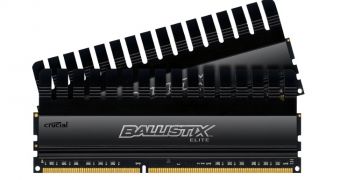Where once the memory market was suffering from a constant decline in prices, now chips and modules are getting more and more expensive, with no signs of stopping any time soon.
Enough time has passed for an examination of the month of April 2013 to be successfully made, and what DRAMeXchange has to share isn't encouraging.
Not encouraging for consumers that is. Companies that actually make and sell random access memory have every reason to feel giddy. Higher prices means higher profits after all.
Mainstream DDR3 4 GB modules sold for as high as $27 in the second half of April, which is about the same as 20.80 EUR.
That's 13% more than they shipped for in January, and 70% more than five months ago, when the period of price decline ended.
The upswing is likely to continue too. We are well past the point where we can call the rebound in pricing temporary.
Meanwhile, 2 GB modules sold just as well as 4 GB one, although the price increase wasn't quite as massive: 9% (to $15.5 / 11.94 EUR).
Memory suppliers continue to reallocate capacity away from commodity DRAM production.
That is to say, the upswing in prices isn't owed to a rising consumer demand, but to a large cut in production activities.
Meanwhile, the output that is used is being accumulated so as to avoid potential shortages that this production cut would otherwise cause later in the year, after the slow season ends.
That said, it isn't exactly easy to predict what way prices will go in the second half of the year, even though manufacturers will try to keep their strategies viable.
Right now, market supply and demand is rather balanced, and may prevent further price boosts from being too high. Tags may reach the highest sequential growth in Q2, and taper off afterwards because the market could shake price trends at any time.

 14 DAY TRIAL //
14 DAY TRIAL //